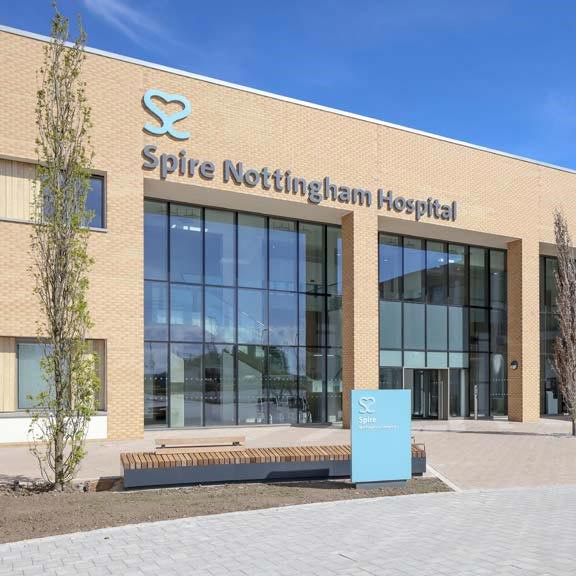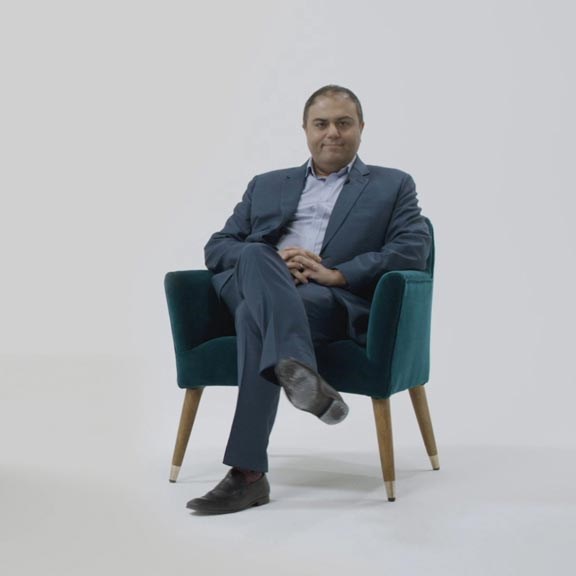Prostate surgery and laser prostate surgery
Treatment to reduce an enlarged prostate that is causing problems.
We offer some of the latest techniques for prostate surgery to relieve urinary problems caused by an enlarged prostate gland in men.
Sometimes also called
- Transurethral prostatic resection
- TURP procedure or TURP surgery
- Transurethral resection of the prostate (TURP)
- Laser prostate surgery (HoLEP or GreenLight)
- UroLift®
- Transurethral water ablation
At a glance
-
Typical hospital stay
1–3 nights -
Procedure duration
45–120 minutes -
Type of anaesthetic
General, spinal, epidural or local -
Available to self-pay?
Yes -
Covered by health insurance?
Yes
Why Spire?
- Fast access to treatment when you need it
- Internationally and nationally renowned consultants
- Clear, inclusive pricing
- 98% of our patients are likely to recommend us to their family and friends
What is prostate surgery?
During surgery, your surgeon will remove part of your prostate – a small gland that sits at the base of the bladder in men. The gland surrounds your urethra – the tube that carries urine from your bladder to your penis.
An enlarged prostate, also known as benign prostatic hyperplasia (BPH), is a common condition in older men and the causes are thought to relate to age and changes in hormone level, with older age and family history increasing the risk.
If you have an enlarged prostate, it can press on your bladder and urethra, interrupting urine flow and causing these symptoms:
- Difficulty starting to pass water
- Feeling that you haven’t emptied your bladder properly
- A weak flow of urine that stops and starts
- Needing to strain to pass water
- Needing to go to the loo a lot, especially at night
- Getting sudden urges to pass water
Other complications due to blocked urine flow may include:
- Recurring urinary tract infections (UTIs)
- Kidney or bladder damage
- Bladder stones
- Haematuria (blood in your urine)
Your doctor may recommend treatment or refer you to a urology specialist if you have moderate to severe urinary problems which haven’t improved with:
- Lifestyle changes to manage urine flow
- Medication to shrink your prostate, relax your prostate or bladder muscles, or to manage urine flow
The treatment will trim away or destroy the obstructive prostate tissue that’s pressing on your bladder and urethra, easing symptoms.
Your consultant will diagnose a prostate enlargement by asking about your symptoms and carrying out tests, which may include:
- A physical examination of your back passage, stomach and genitals
- Blood and urine tests to rule out other causes such as infections, kidney disease or prostate cancer
Find your nearest Spire hospital
Almost all of our hospitals offer private prostate surgery and have teams of urologists who specialise in this procedure.

Events
Free men’s health and urology information event with Mr Tim Dudderidge
Our event aims to give men access to the information, services, and treatment they need to live healthier.
Learn more
Free patient event for urological conditions with Mr Stephen Gordon
Join Consultant Urologist, Mr Stephen Gordon for an evening talk.
Learn more
Free patient event for urological men's health with Mr Michael Swinn
Join Consultant Urological Surgeon, Mr Michael Swinn for an evening talk.
Learn more
How prostate surgery works
There are several methods available for prostate surgery.
TURP
The standard method is transurethral resection of the prostate (TURP). During a TURP procedure, which is usually performed under general anaesthetic, your surgeon will:
- Insert a resectoscope (a long, thin, metal tube with a telescopic camera and light) through your penis into your urethra and bladder
- Pass a small, electrically-heated wire loop through the resectoscope
- Trim small central pieces of prostate tissue using the wire loop to create a channel where urine can easily pass through, and extract the pieces by suction
- Insert a thin tube called a catheter through your penis and into your urethra
- Use the catheter to flush out any blood clots, urine or remaining prostate tissue from your bladder using a saltwater solution
- The catheter will remain in place for around one to three days after the operation
TURP may also be performed to treat or prevent any further complications as a result of blocked urine flow, including recurring UTIs, kidney and bladder damage, bladder stones, blood in the urine and difficulties in urination.
Laser prostate surgery
With laser prostate surgery, your surgeon will follow the same steps as TURP, but instead of using a resectoscope with an electrically-heated wire to cut away your prostate, they’ll use a scope which has a special laser (eg a HoLEP Holmium laser or GreenLight laser). The laser generates precise and intense heat to cut away sections of your enlarged prostate.
UroLift
UroLift is a procedure where instead of removing prostate tissue, prostatic urethral lift (PUL) implants are positioned to hold your prostate out of the way and increase the width of your urethra. This procedure can be performed under general or local anaesthetic, a urinary catheter is not usually required.
Prostate artery embolisation (PAE)
PAE shrinks the size of your prostate by blocking the arteries that feed it. It’s a minimally invasive technique which is usually performed by an interventional radiologist using local anaesthetic. A urinary catheter is not usually required and you’ll need to let your doctor know if you have any allergies or have previously reacted to an intravenous contrast medium.
Transurethral resection or vaporisation of the prostate (TUVP)
A thin tube, known as a cystoscope, is inserted into the urethra and a laser attached to the end targets energy to cut or burn away prostate tissue.
While TURP is probably still the gold standard for prostate surgery, these alternative, less invasive or non-surgical methods can provide benefits to some patients. These may include:
- Fewer side effects such as a lower risk of bleeding – non-surgical methods may be preferred for men who take medication that affects blood clotting properties
- A shorter hospital stay – these treatments can usually be done with just a single overnight stay at the hospital
- A quicker recovery – recovery from less invasive and non-surgical methods generally takes less time than TURP
- A catheter is needed for less time or not at all – a TURP procedure will require you to have a catheter for around two days
What to expect during prostate surgery
Who will be involved?
As well as your chosen surgeon, you’ll also be seen by an anaesthetist who will administer anaesthetic during the operation.
Preparing for prostate surgery
You may be asked to attend a consultation a couple of weeks before your operation is due. Here, you might undergo some blood or other tests to help check your fitness for surgery. During this pre-operative assessment, you’ll also have to inform us of any medication you are currently taking.
If you are a smoker, you should try and cut down in the build-up to your operation, this can reduce your risk of complications including chest infections and blood clots.
You may be asked to stop taking medication several days before your surgery, such as blood thinners. Your doctor may also prescribe you an antibiotic to reduce your risk of getting a urinary tract infection.
On the day of your surgery, you’ll have to stop eating around six hours before the procedure, but you can drink clear fluids until two hours before. You may also be given some compression stockings to prevent any blood clots forming during surgery.
How long does the procedure take?
It’s usually between 45 minutes and two hours, depending on the size of your prostate and the technique used.
Anaesthetic choices
Your consultant will advise on what’s best for you, based on your health and personal preferences. It will either be:
- A general anaesthetic, when you’re asleep
- A spinal or epidural anaesthetic, when you’re awake but can’t feel anything below your waist
- A local anaesthetic so the treatment area will be numb
Pain after surgery
It’s normal to feel some discomfort afterwards and if you have a catheter, you may experience some bladder spasms from the catheter rubbing against your bladder wall, but you shouldn’t have any extreme pains. Everyone experiences pain differently and you’ll be given medication to help you manage this.
Your hospital stay
For a TURP procedure, you’ll need to stay in hospital for between one and three nights, you’ll be able to go home once your catheter is removed. For laser prostate surgery, you may be able to go home on the same day, though many people stay in hospital for the night. For UroLift or PAE you can usually go home on the same day. All patients will be given advice about recovery and a date for a follow-up appointment, this is usually a few weeks after your procedure.
Q & A
Sandy Gujral, Consultant Urologist Surgeon
Talking about prostate surgery
View transcript of this video
What is the prostate?
The prostate is a male sexual gland. It’s basically a gland which sits between the bladder and the urethra, which is a tube which urine passes out of from the bladder.
How does the prostate become enlarged?
The causes of enlargement are essentially related to age, but also things like testosterone levels. These can be related to race – for example, Afro Caribbean’s tend to inherit a slightly raised testosterone level compared to Caucasians – and genetics, so some families tend to have bigger prostates than others.
Will an enlarged prostate always be treated with surgery?
The symptoms related to an enlarged prostate can be treated often without surgery and in many men we can use lifestyle changes, we can also offer them drugs. Once medication fails, then often General Practitioners will refer the patients to specialists, called urologists, and they’ll assess individuals for surgical treatment.
What is involved in prostate surgery?
Transurethral surgery (TURP), or laser TURP and many other treatment types, basically mean we use an instrument, which is a telescope, down the urethra to the level where the prostate is pushing against the urethra. Then we cut out the central bits of the prostate, almost like coring the inside of an apple, to make a hole, a channel which then allows urine to pass through more easily.
How long will my prostate surgery take?
The surgery itself takes about, anything from 30 minutes to an hour. Once the patient is on the ward, after the operation, the length of stay in the hospital tends to be between a day to two days.
Will prostate surgery affect my sexual function?
Most men after prostate or laser surgery will start regaining erectile function within a few days after the surgery.
How successful is prostate surgery?
In general terms, TURP and laser surgery is fantastic, and the outcomes are highly successful.
Recovering from enlarged prostate surgery
Recovery timeline
We aim to get you back to everyday life as quickly as possible, although everyone’s different and your treatment and recovery will be personal to you. If you have a catheter, you can expect to return home once it has been removed, this is usually within three days. You can expect to resume driving and gentle activities such as walking after one to three weeks of recovery, though you should always stop if you start to feel any pain. You may also be able to go back to work if you have a desk-based job and you should be able to have sex if you’re comfortable enough. A full recovery can take anywhere between four to eight weeks.
Urinating after TURP
After TURP, you’ll be unable to urinate as your urethra will be swollen. You’ll need to use a catheter until the swelling has gone down, this is usually around two days after your procedure, but it can be a little longer if you are still having difficulties. You may find it painful and difficult to control the flow at first, but this will get better after a few days.
Your lifestyle after treatment
For TURP and laser prostate surgery, you’ll have a catheter which will be left in place for one to three days until swelling in your urethra has gone down. Once you can pass water normally, you can go home.
When you're ready to leave hospital, you’ll need to arrange for someone to collect you and you may want them to stay with you for the first 24 hours. After treatment, it’s normal to experience these temporary symptoms:
- Mild burning and discomfort on passing water
- Needing to pass water frequently or urgently
- Occasional blood in your urine for the first couple of weeks
- Tiredness
- Constipation
It’s advised that you drink lots of water during your recovery to help reduce your risk of getting a urinary tract infection (UTI) and it also helps clear out any blood in your urine. Your doctor may also recommend eating foods high in fibre to avoid constipation, and pelvic floor exercises to improve your bladder control.
You can do gentle exercise such as walking when you feel up to it, but you shouldn’t lift heavy objects, including shopping, for the first three to four weeks. You may want to arrange help with everyday tasks.
It will usually be three to four weeks before you can return to work, but this largely depends on your job. If your work is physically strenuous, you may need longer to recover from your surgery – your consultant will advise you. Check with your consultant before you start driving again, you’ll be safe to do so as soon as you can perform the emergency stop manoeuvre comfortably. It’s also advisable to check with your motor insurance company. Most people can get back to all normal activities by eight weeks and feel comfortable enough to have sex after around four weeks.
You may have to wait before returning to any medications that affect how your blood clots, your consultant will discuss this with you.
The recovery time for laser prostate surgery, UroLift or PAE may be quicker than for TURP.
Risks and complications of prostate surgery
Most people have prostate surgery without complications, but all surgery carries some risks. Your consultant will explain them to you before you go ahead.
Prostate surgery complications can include:
- Retrograde ejaculation, when you don’t produce semen when you orgasm – it’s not harmful but may affect fertility
- Needing the loo urgently
- Difficulty getting and maintaining an erection
- Narrowed urethra, causing urinary problems such as difficulties holding urine
- Bleeding
- Urinary tract infection
- Need for re-treatment
- Low sodium levels in the blood
With TURP, there is also a risk of TURP syndrome, associated with the irrigation fluid required to flush out the cut-away parts of your prostate. TURP syndrome needs urgent medical treatment. Symptoms include:
At Spire hospitals, your safety is our top priority. We have high standards of quality control, equipment and cleanliness and a rigorous system of review and training for our medical teams.
Treatment and recovery timeline
As a guide, here’s a typical recovery timeline for TURP prostate resection – the most common procedure:

1-3 days
Catheter is removed and you can leave hospital
1-3 weeks
Driving and gentle walking
3-4 weeks
Back to desk-based job and sex if you’re comfortable enough
4-8 weeks
Full recovery
-
1-3 days
Catheter is removed and you can leave hospital
-
1-3 weeks
Driving and gentle walking
-
3-4 weeks
Back to desk-based job and sex if you’re comfortable enough
-
4-8 weeks
Full recovery
Frequently asked questions
What is the best surgery for an enlarged prostate?
Transurethral resection of the prostate (TURP) is considered to be the gold standard for enlarged prostate surgery, but different procedures have their benefits and may be considered more suitable for you.
Is surgery necessary for an enlarged prostate?
Not always. Enlarged prostate symptoms can be treated with medication and lifestyle changes, if medication fails to relieve the symptoms then surgery is an option.
How painful is TURP surgery?
Transurethral resection of the prostate (TURP) is performed under general anaesthetic so you will not feel any pain during the procedure itself. You may find that passing urine is painful in the days following your surgery.
What kind of doctor performs prostate surgery?
Prostate surgery is usually performed by a urological surgeon.
What is the main cause of prostate enlargement?
The main cause of an enlarged prostate is age, as the size of the prostate naturally increases in men as they get older.
How dangerous is prostate surgery?
All surgery carries some risks, though prostate surgery is generally not considered to be dangerous. Most procedures are performed without any complications and the outcomes are very successful.
What food and drinks irritate the prostate?
Fizzy drinks and drinks that contain alcohol, caffeine and artificial sweeteners can all make the associated enlarged prostate symptoms worse.
How many years does TURP surgery last?
TURP typically relieves symptoms quickly and most men find they have a significantly stronger urine flow within a few days. After several years have passed, some may need follow-up treatment to ease symptoms again.
The treatment described on this page may be adapted to meet your individual needs, so it's important to follow your healthcare professional's advice and raise any questions that you may have with them.

